Home> Company News> Hydraulic Pump Controllers: An Introduction to the Technology
- AddressNorth Tan Street, Jinan,Shandong
- Factory Address123 Ubi Ave 3 #12-30 Frontier Singapore 408867
- Worktime9:00-18:00(Beijing time)
- Phone(Working Time)86 0531-8299 9952
Hydraulic pump controllers play a vital role in modern industry, ensuring efficient operation of hydraulic systems. With the increasing demand for automation and advanced control systems, hydraulic pump controllers have become an essential component in many industrial processes. In this paper, we will discuss the importance of hydraulic pump controllers, their function and components, types of hydraulic pump control systems, applications, maintenance, and future outlook.
Hydraulic pump controllers are used in a wide range of industries, including manufacturing, construction, mining, and agriculture. They are used to control the flow and pressure of hydraulic fluid in hydraulic systems, optimizing performance and reducing energy consumption. Proper control of hydraulic pumps ensures the system operates safely and efficiently.
This paper aims to provide a comprehensive overview of hydraulic pump controllers, their functionality, and applications. It is intended for engineers, technicians, and managers involved in the design, operation, and maintenance of hydraulic systems. By understanding the importance and function of hydraulic pump controllers, readers will be able to make informed decisions about the selection, installation, and maintenance of hydraulic pump controllers in their respective industries.

Understanding Hydraulic Pump Controllers
A hydraulic pump controller is an essential component of hydraulic systems, providing precise control over the pump's operation to ensure optimal performance and efficiency. The controller serves as an intermediary between the hydraulic pump and the control system, regulating the pump's flow rate, pressure, and other parameters to maintain optimal system operation.
Hydraulic pump controllers are available in different types, each designed to meet specific application requirements. These controllers can be broadly categorized as analog or digital, with both types featuring unique characteristics that make them ideal for certain applications.
Analog hydraulic pump controllers are the traditional type of controllers that use analog signals to regulate pump operation. They typically feature a potentiometer that allows the operator to manually adjust the pump's output based on the system's requirements. Analog controllers are simple, reliable, and cost-effective, making them an excellent option for basic hydraulic systems that do not require high precision control.
On the other hand, digital hydraulic pump controllers use microprocessors to control the pump's operation. They offer more advanced features, including programmability and remote monitoring capabilities, making them an ideal option for complex hydraulic systems that require precise control over the pump's operation. Digital controllers can be programmed to adjust pump operation based on changing system demands, making them more energy-efficient and reliable than analog controllers.
In addition to their different types, hydraulic pump controllers also feature unique components that help them function effectively. These components include sensors, control valves, and actuators, which work together to monitor the pump's performance and adjust its operation as needed.
Overall, understanding hydraulic pump controllers is essential for maintaining optimal system performance and efficiency. With the right controller in place, hydraulic systems can operate efficiently, reducing downtime, and maintenance costs.
Principles of Hydraulic Pump Controller Functionality
Hydraulic pump controllers are designed to regulate and control the flow and pressure of hydraulic fluid in a system. These controllers work by sensing the flow and pressure of the fluid in the system and adjusting the output of the pump to maintain the desired flow rate and pressure.
The working principle of hydraulic pump controllers can be explained using the example of a closed-loop control system. In a closed-loop control system, the controller continuously monitors the system parameters and compares them to the desired set point. If there is a difference between the system parameters and the set point, the controller makes adjustments to the system to bring it back to the desired state.
In a hydraulic pump controller system, the pump output is adjusted based on feedback from the system. The controller senses the system pressure and adjusts the pump output to maintain the desired pressure level. Similarly, the controller senses the flow rate and adjusts the pump output to maintain the desired flow rate.
There are different types of hydraulic pump controllers available in the market. The most common types include proportional control, integral control, and derivative control. Proportional control adjusts the pump output in proportion to the difference between the system parameters and the set point. Integral control adjusts the pump output based on the accumulated error over time. Derivative control adjusts the pump output based on the rate of change of the system parameters.
The selection of the type of hydraulic pump controller depends on the specific requirements of the application. For example, in applications where rapid response time is required, proportional control may be the best option. On the other hand, in applications where stability is more important than speed, integral control may be more suitable.
Overall, hydraulic pump controllers play a crucial role in maintaining the efficiency and stability of hydraulic systems. By regulating the flow and pressure of hydraulic fluid, these controllers ensure that the system operates at optimal levels, resulting in increased productivity, reduced energy consumption, and longer equipment life.
Hydraulic Pump Controller Components and Their Functions
Hydraulic pump controllers consist of several components that work together to ensure optimal pump performance. The main components of a hydraulic pump controller include:
Control Valve
The control valve is the component that regulates the flow of fluid to the hydraulic pump. It works by directing the flow of oil through the pump and back to the tank, depending on the system's pressure and flow requirements.
Pressure Relief Valve
The pressure relief valve is responsible for maintaining a consistent pressure within the hydraulic system. It releases excess pressure by opening up a passage to the tank when the system pressure exceeds a set limit.
Pressure Gauge
The pressure gauge is a component that measures the hydraulic pressure within the system. It is located in the control panel of the hydraulic pump controller and is used to monitor system performance and diagnose issues.
Flow Meter
The flow meter measures the flow rate of the hydraulic fluid through the system. It is a critical component for maintaining optimal system performance as it helps ensure that the pump is providing the necessary flow rate to the system.
Solenoid Valve
The solenoid valve is an electronic valve that controls the flow of hydraulic fluid through the system. It is activated by an electric signal from the pump controller and regulates the flow of oil based on the system's requirements.
Control Panel
The control panel is the component of the hydraulic pump controller that provides operators with access to the system's functions and performance metrics. It typically includes indicators, displays, and controls for system pressure, flow rate, and other critical parameters.
By understanding the function and operation of each of these components, operators can ensure that their hydraulic pump controller is running optimally and maintain it as necessary.
Types of Hydraulic Pump Control Systems
Hydraulic pump control systems are used to regulate the flow and pressure of hydraulic pumps in various industrial applications. There are several types of hydraulic pump control systems available, each with its own advantages and disadvantages.
-
Open Loop Systems: Open loop hydraulic pump control systems are the simplest and most common type of control system. In open loop systems, hydraulic fluid is pumped through a valve or series of valves to operate an actuator or hydraulic motor. The system does not monitor or adjust the flow or pressure of the fluid, making it less precise and efficient than other control systems.
-
Closed Loop Systems: Closed loop hydraulic pump control systems are more complex than open loop systems and are used in applications that require greater precision and accuracy. In closed loop systems, the system monitors and adjusts the flow and pressure of the hydraulic fluid to ensure that it is at the required level. This is achieved by using sensors, feedback devices, and control algorithms to adjust the valves and pumps accordingly.
-
Proportional Control Systems: Proportional control systems are used in applications that require very precise control over the flow and pressure of hydraulic fluids. These systems use variable speed pumps and proportional valves to maintain a constant flow rate, even as the load on the system changes. This allows for highly accurate control and reduces the amount of energy wasted in the system.
-
Servo Control Systems: Servo control systems are used in applications that require highly precise and responsive control over the flow and pressure of hydraulic fluids. These systems use servo valves and feedback devices to control the movement of the actuator or hydraulic motor. The system constantly monitors the position and speed of the actuator and adjusts the flow and pressure of the hydraulic fluid accordingly, ensuring that it is always at the required level.
-
Load Sensing Systems: Load sensing hydraulic pump control systems are used in applications where the load on the system is constantly changing. These systems use sensors to measure the load on the system and adjust the flow and pressure of the hydraulic fluid accordingly. This ensures that the system operates at maximum efficiency, regardless of the load on the system.
-
Proportional Load Sensing Systems: Proportional load sensing hydraulic pump control systems are used in applications that require both high precision and variable loads. These systems use a combination of proportional valves and load sensing technology to adjust the flow and pressure of the hydraulic fluid as the load on the system changes. This allows for highly accurate control over the system, even as the load changes.
Each type of hydraulic pump control system has its own advantages and disadvantages, and the choice of system will depend on the specific needs of the application. Factors such as precision, energy efficiency, and load variability will all play a role in the selection of the appropriate hydraulic pump control system.
Applications of Hydraulic Pump Controllers
Hydraulic pump controllers have a wide range of applications in different industries, ranging from manufacturing to aerospace. The use of hydraulic pump controllers can help improve the efficiency of hydraulic systems, reduce energy consumption, and ensure the longevity of equipment. Here are some of the most common applications of hydraulic pump controllers:
Manufacturing Industry
Hydraulic pump controllers are commonly used in manufacturing industries to power hydraulic machinery and equipment. These controllers can help improve the efficiency and reliability of hydraulic systems, which can increase productivity and reduce downtime. Hydraulic pump controllers are used in manufacturing industries to power hydraulic presses, stamping machines, injection molding machines, and other types of machinery.
Construction Industry
Hydraulic pump controllers are also used in the construction industry to power hydraulic machinery and equipment. These controllers can help improve the efficiency and safety of hydraulic systems used in construction, such as cranes, excavators, and bulldozers. Hydraulic pump controllers are used in the construction industry to power hydraulic cylinders, motors, and valves.
Aerospace Industry
Hydraulic pump controllers are also used in the aerospace industry to power hydraulic systems used in aircraft. These controllers can help improve the safety and reliability of hydraulic systems, which are critical to the operation of aircraft. Hydraulic pump controllers are used in the aerospace industry to power hydraulic actuators, landing gear, and flight control systems.
Marine Industry
Hydraulic pump controllers are commonly used in the marine industry to power hydraulic systems used in ships and boats. These controllers can help improve the efficiency and reliability of hydraulic systems used in marine applications, such as steering systems, winches, and cranes. Hydraulic pump controllers are used in the marine industry to power hydraulic motors, cylinders, and valves.
Oil and Gas Industry
Hydraulic pump controllers are also used in the oil and gas industry to power hydraulic systems used in drilling and production operations. These controllers can help improve the efficiency and safety of hydraulic systems used in oil and gas applications, which can reduce downtime and improve productivity. Hydraulic pump controllers are used in the oil and gas industry to power hydraulic pumps, valves, and motors.
Overall, hydraulic pump controllers play a crucial role in a variety of industries, helping to improve the efficiency and reliability of hydraulic systems. Their versatility and flexibility make them a valuable asset in any application that relies on hydraulic power.

Maintenance of Hydraulic Pump Controllers
Maintaining hydraulic pump controllers is crucial to ensuring their optimal performance and longevity. Proper maintenance techniques should be employed to avoid unnecessary repairs, downtime, and costs associated with replacing components. Regular maintenance also ensures that the system operates safely, as failures can result in safety hazards and risks.
One of the most important aspects of hydraulic pump controller maintenance is routine inspection. Regular inspection of the system helps detect any faults or damage, including leaks, loose connections, and worn parts. This enables timely repairs to be carried out before the situation worsens.
In addition to routine inspections, hydraulic pump controllers require periodic cleaning to remove dirt, dust, and other debris that may clog or obstruct the system. Cleaning is especially important for hydraulic pump controllers that operate in harsh environments, as they are more susceptible to damage from debris buildup.
Fluid levels should also be checked and maintained at all times. Hydraulic fluid is essential to the proper functioning of the system and should be checked regularly to ensure that it is clean and at the proper level. Inadequate fluid levels or dirty fluid can cause the pump to overheat, which can damage the system.
Proper lubrication of the hydraulic pump controller is another essential aspect of maintenance. Lubrication is necessary to reduce friction and wear between moving parts, and should be carried out regularly to ensure optimal performance.
In addition to these routine maintenance techniques, it is important to follow the manufacturer's recommended maintenance schedule. The schedule typically includes guidelines for replacing worn or damaged components, such as hoses, filters, and seals. Following the recommended maintenance schedule can help prevent unexpected failures and extend the life of the hydraulic pump controller.
Integrating hydraulic pump controller maintenance with other maintenance systems can also be beneficial. For example, implementing a computerized maintenance management system (CMMS) can help track maintenance tasks, plan for routine maintenance, and facilitate communication between different maintenance departments.
Overall, proper maintenance is essential to ensure the optimal performance and longevity of hydraulic pump controllers. Regular inspections, cleaning, fluid checks, lubrication, and adherence to manufacturer's recommended maintenance schedules are all essential components of a successful maintenance program. By implementing these techniques, hydraulic pump controllers can operate safely and efficiently for years to come.
Future Outlook
The future of hydraulic pump controller technology is promising. With advancements in technology, there is an opportunity to improve the efficiency and reliability of hydraulic pump controllers. New technologies are being developed to improve the performance of hydraulic pump controllers, including better sensing and control systems, improved software algorithms, and better diagnostic tools.
One of the most promising areas of development for hydraulic pump controllers is in the field of automation. The increasing use of automation in industries means that hydraulic pump controllers will play a critical role in ensuring the efficient operation of automated systems. Automation can help to reduce the amount of manual labor involved in hydraulic pump control, leading to increased efficiency and productivity.
Another area of development for hydraulic pump controllers is in the field of energy efficiency. Improving the energy efficiency of hydraulic pump controllers is important for reducing energy consumption and operating costs. New technologies such as variable speed drives and energy recovery systems are being developed to improve the energy efficiency of hydraulic pump controllers.
In addition to these technological developments, there is also a growing trend towards more sustainable and environmentally friendly hydraulic pump controllers. There is a need to reduce the environmental impact of hydraulic pump controllers and other industrial equipment. New technologies are being developed to reduce the use of harmful chemicals in hydraulic pump controllers and to improve their overall sustainability.
The future of hydraulic pump controllers also has implications for industries and society as a whole. As technology improves and becomes more advanced, there is the potential for hydraulic pump controllers to play a more significant role in industry and everyday life. The use of hydraulic pump controllers in automation systems and other advanced technologies is expected to increase, leading to increased productivity, efficiency, and innovation.
In conclusion, the future of hydraulic pump controllers is bright, with new developments in technology and a growing focus on sustainability and efficiency. As these technologies continue to evolve, they will play an increasingly important role in industry and society, helping to drive innovation, increase productivity, and reduce environmental impact.


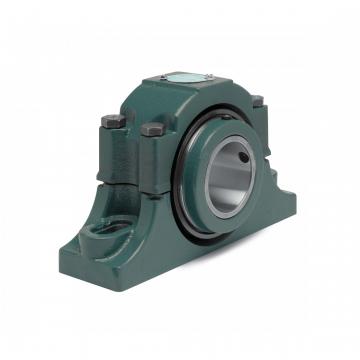 Mounted Tapered Roller Bearings P4B-EXL-212RE
Mounted Tapered Roller Bearings P4B-EXL-212RE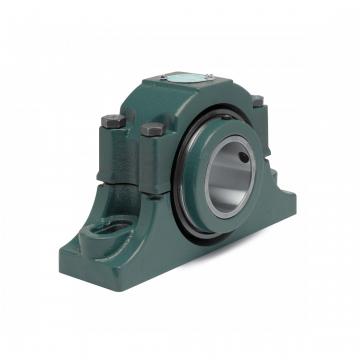 Mounted Tapered Roller Bearings P4B-EXL-400R
Mounted Tapered Roller Bearings P4B-EXL-400R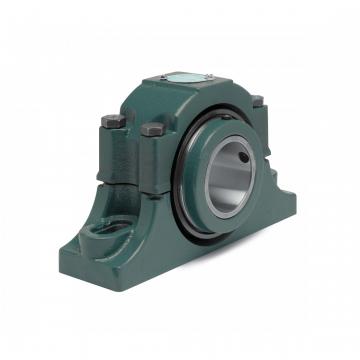 Mounted Tapered Roller Bearings P4B-EXL-400RE
Mounted Tapered Roller Bearings P4B-EXL-400RE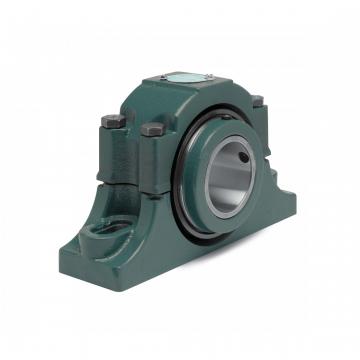 Mounted Tapered Roller Bearings P4B-EXL-315RE
Mounted Tapered Roller Bearings P4B-EXL-315RE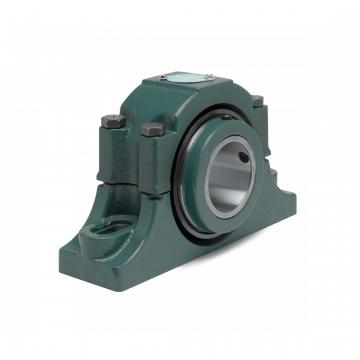 Mounted Tapered Roller Bearings P4B-EXL-207RE
Mounted Tapered Roller Bearings P4B-EXL-207RE